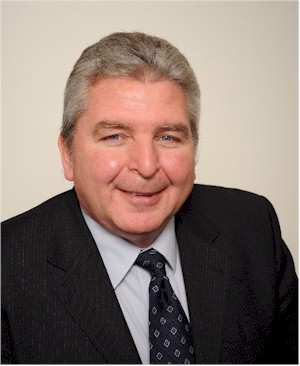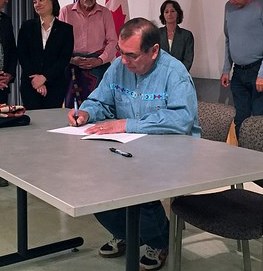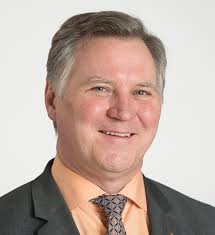By John Copley
(ANNews) – Before Alberta’s Office of the Child and Youth Advocate (OCYA) became an independent office of the Alberta Legislature in 2012, it didn’t have a mandate to conduct death reviews for adults or children. There have been some changes over the past six years but legislation still doesn’t require the Youth Advocate’s office to carry out the type of five-year review recently completed by Provincial Child and Youth Advocate Del Graff.
“Every province has its own legislation and very few do reviews at all on children,” Graff explained in a recent interview. “We aren’t required by legislation to do this kind of review but we’ve been receiving reports over the past five years and we thought it was prudent, we thought there were some things we could learn from taking an overall look to see what these circumstances are telling us.”
The review, he noted, did find specific themes which “seem to be fairly consistent when we look at the grouping of all the circumstances.”
The review identified six emerging themes, including the importance of thorough and ongoing risk assessment and the need to pay greater attention to youth suicide and the risk factors that contribute to the growing numbers of suicide. Another theme indicates the need to develop strong on-going supports for both children and families during and after DCS intervention takes place. Caseworkers, the report notes, are too often in a position where they have to make important decisions with inaccurate or incomplete information. Other themes include the need for improved transition planning, the vulnerability that young people face when it comes to being victims of violence and the need for better information sharing throughout the system.
By its very nature the report brought with it some disturbing information, not the least of which is the fact that the numbers of fatality and serious injury incidents among youth continue to escalate.
The number of reports received by OCYA in 2016-17 were more than three times the number when the province’s child and youth advocate began tracking the status of children in care in 2012-13, when 20 reports were received. In 2014 that number grew to 35 and in 2016-17 it more than doubled to 76.
Of the 252 notified incident reports that involved serious injuries and/or deaths received by Graff’s office between April 1, 2012 and March 31, 2017, 20 involved children between seven and 11 years of age and 85 involved youth aged 12-17. 37 reports dealt with youth or young adults over the age of 18. The most staggering number of all involves the most vulnerable in our society, infants and children under seven years of age. In all 28 investigative reviews were completed by OCYA.
A troubling factor is that of the 252 notifications received, 156 came from the Ministry of Children’s Services and involved young people in care or receiving intervention services (not including adoptions). 96 cases were from the Office of the Chief Medical Examiner (OCME); each had received intervention services within two years of their death.
Though 60 per cent of the deaths were classified as accidental or medically related, 21 were a result of violence and nearly half involved children under the age of six years. The report noted that “infants are at an increased risk of violence during their first year due to their physical vulnerability and the presence of stressors experienced by parents or caregivers.”
The report also included information on 35 reported suicides, of which 25 were Indigenous youth. Graff’s report stressed the need for better suicide prevention programs and strategies.
“It is imperative,” he noted in the report “that young Indigenous people feel connected to their culture, community and have a strong sense of identity.”
Graff made it clear that the reported 252 notifications are at “the extreme end of the continuum” and that it doesn’t necessarily reflect an irreparable child welfare system that, “for the most part” does a good job as it “protects children from harm” in numbers that add up into “the thousands.”
Del Graff has been providing the Alberta Government and the Ministry of Children’s Services ongoing recommendations since he first became the province’s Provincial Child and Youth Advocate in 2011. Over the years some of his recommendations have been followed up on and in some cases changes have been implemented as a result, but the overwhelming majority have received little attention. In a 2016 interview Graff said that despite the fact that only a small number of recommendations brought positive change he was “more optimistic than ever” because of the change in government and the “broader public discussion” taking place on reconciliation.
He said then that he remained cautious because commitments have been made before and never followed through on.
“Certainly there is that history of there being some calls to action, and then those calls to action not actually being implemented,” he said, noting that “that’s been the history of Aboriginal stakeholders in Alberta.”
That history came via four decades of Conservative rule, a political party that almost every Indigenous person in the province, if not the country, knows has seldom introduced any meaningful change that promotes Indigenous Canadians, their cultures, their traditions or their hopes for the future.
In Alberta’s current political scene, however, Graff said that he has seen some promising changes when it comes to child welfare, though the process is slow because it takes time to change a structure that’s been embedded for decades.
“Organizational cultures are difficult to change and they take a lot of time,” he said, “but the more sustained a focus is on change, the more likely change is to happen.”
Changes within the ministry have been making a difference, he said, noting that “the ministry has put forward an agenda to say ‘we are going to make sure there’s some sort of cultural awareness training for all of our case workers.’ They are doing that as a system – it’s helpful when it is sustained over time and does help shift workers’ perspectives about the client groups they are dealing with. At the same time there is so much more to do.”
Graff said one change that would make a difference would be a shift in the way child welfare works with Indigenous communities
“There are different world views, there are different perspectives about how to raise children and the more closely aligned the child welfare system can be with those natural ways that Indigenous people raise children, the more likely there’ll be better outcomes for kids,” he said. “The more connected kids are to their families, communities and identity as Indigenous peoples, the more able they are to deal with the adversities they face in life. There are many things that could be done but the system changes ever-so-slowly – not fast enough for us, but changing nevertheless.”
In an interview, Alberta Children’s Services Minister, Danielle Larivee, said she was “very thankful for Del and the work that he does in hi-lighting issues. We’ve sat down and had specific conversations about where we need to go and what we need to do. There is still work to be done and some ways to go in terms of what we need to do and where we need to go. We have already made substantial progress in reducing the numbers of kids brought into care and we’ve introduced a new family focused program model that focuses on keeping the families together. It focusses on creating a safety plan and pulling whatever resources are available to keep families together.”
An example, she noted, would be helping and supporting an addicted client locate and enter a treatment facility – with continuing support.
“Instead of being told that, ‘hey you’re addicted; you’re going to lose your kid,’ or ‘I’m taking your kids and you might not get them back,’ we are working to include safety nets with extended family or the other partner or to create a plan to bring in workers” doing the treatment period “so that family can stay together.”
“This type of practice-ship,” she emphasized, “takes a long time to become implemented in every single case, but it is being utilized in social services and we are seeing progress and a substantial reduction in the numbers of children coming into care.”
Minister Larivee also noted in a statement to media that the most urgent issue raised in the five-year report is the disquieting overrepresentation of Indigenous children and youth in the child intervention system.
“We must do more to address this issue, in partnership with Indigenous people and Indigenous leaders,” she said.
At the end of his five-year report Graff expressed his personal views, gave credit where credit was due and made it clear that he remains as he has since the first day he took office – optimistic.
“Although we spoke in this report about numbers of children, I do not want us to ever forget that each and every one is a precious child, a son or a daughter, a sister or brother, a grandchild, a cousin or niece or nephew. The tragedy of their loss will last a lifetime for those who loved them. There is immense suffering for families, for relatives, for friends, and others who love a child who passes away. To those who have suffered the loss of a child you love, I do not think there are words for what you have to endure. I sincerely hope you find comfort and solace with the loved ones in your life.
“For those who work with vulnerable children and families, I believe you do this work because you care deeply about children and families, and you want to make a positive difference. Whether you are a youth worker, a foster parent, or a child intervention worker, we know from our experience with you, that you too mourn the loss of a child. We know it is hard, and that you are significantly impacted when a child you are involved with passes away, or is seriously injured.
“In my role as the provincial Child and Youth Advocate, I have the privilege of hearing about the experiences of young people and making recommendations that I believe will make a difference for vulnerable children and youth. It is critical that the focus of my reviews is on learning and influencing systems to make improvements for the young people they serve. But it is important to remember that every day, people who work in the Child Intervention system are doing good and honourable work, most of which the public never hears about. Regrettably, that message is not always as clear as I would like it to be, given the tragic circumstances that result in an Investigative Review.
“My staff and I have learned a lot over the years. Most importantly, we have learned that each circumstance is about a child, the life they lived, the people who loved them, and those whose lives they touched. These are the people who share so generously with us. And with what we learn, we must all make sure we do whatever we can to prevent further tragedies for children and families in Alberta.”
A 38-page summary of the Child and Youth Advocate’s report can be found at ocya.alberta.ca.






Be the first to comment on "Alberta Youth Advocate brings humanity to child welfare reviews"